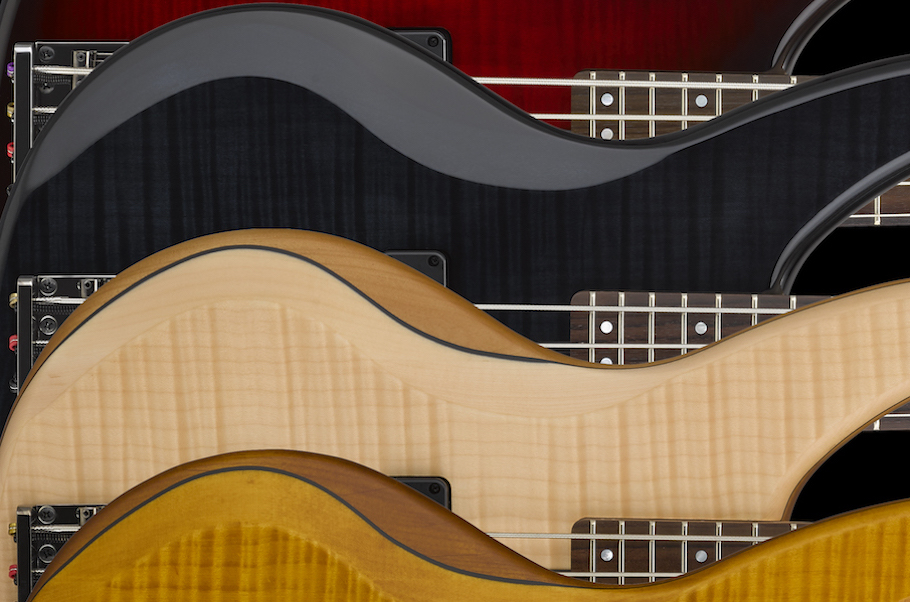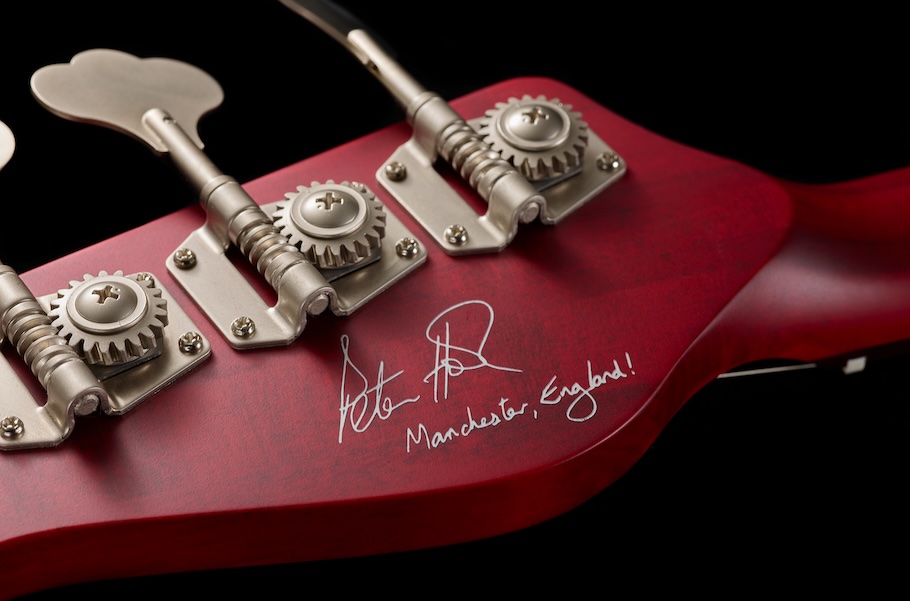5 Tips for Playing 5-String Bass
Here’s how that extra string can make you a better player.
A talented bassist can work magic on just a single string, but even if you haven’t actually tried it, you can probably visualize some of the challenges it would present. For one thing, you’d have to adapt your technique to play it well. How would it be different from playing a conventional 4-string bass?
What I want to focus on here is not how to get the most out of one string, but how adding an extra string is conducive to new approaches and invites you to rethink how you play your bass. So, without further ado, here are 5 tips for playing 5-string bass effectively.
1. TAKE ADVANTAGE OF THE EXTENDED LOW RANGE
I was initially attracted to the 5-string bass by the low B string and how it allowed me to plumb the lower depths of bassdom with notes that weren’t available to me on my 4-string in standard tuning. Sure, a sub-octave effect via a stompbox or a multi-effect processor like the Line 6 HX Stomp XL can synthetically create notes below low E, and a drop-D tuning can enable you to manually detune your E string to an open D — albeit a rather floppy D. But with a 5-string bass, you don’t need an effect or mechanical device to play that low, and your bottom string won’t be sagging either. When I strap on my Yamaha BB735A, I don’t have to worry about plugging into an effect pedal or any add-ons to go low … I just play.

And having all that extra bottom range is only half of the equation: What you do with it is what really matters. When applied tastefully, that newfound low end can be a game-changer in a song. Playing a groove — or even a whole note — a full octave below where I might play it on a 4-string provides a powerful boost to the energy of a chorus or bridge, as demonstrated in the video below. It also creates additional separation for the bass, helping every other instrument find its appropriate slot in the mix.
2. EXPLORE MORE EFFICIENT HAND POSITIONING
Many 5-string players who start out on a 4-string bass are initially thrown off by what seems at the time to be an extra string. But as they acclimate to the new configuration and get comfortable using that low B, they start to consolidate their hand movements on the neck rather than going on long, awkward runs. It’s an economical approach that saves you energy, and also allows you to play the same pattern faster and in more locations on the fretboard, meaning you can opt between wholly different tonal shapes, depending on whether you’re playing in the middle of the fretboard or down toward the nut.
Here’s a video that demonstrates how a 5-string bass makes it easier to play fast runs:
3. MASTER PALM-MUTING AND USING THE B-STRING AS AN ANCHOR
When you use the low B-string with discipline and intent, it has lots to offer … but be forewarned: If your playing gets sloppy, the B-string can become a source of aggravation for you, your bandmates and the sound man or recording engineer. That’s because it’s thick and floppy, so if the meaty part of your thumb accidentally rubs up against it, it can cause a huge distraction via string and fret noise.
The good news is that you can prevent this from happening with either a palm-mute of the B-string while you’re playing other strings, or by using the B-string as a thumb rest (like the one mounted near the neck or middle position pickups on many basses). Either way, be careful not to mute the B-string so fiercely that it gets mashed down against the pickups, which will create an annoying thump that will please neither your bandmates nor your audience.
Here’s a video demonstrating palm muting:
… and here’s one showing you how to use the B-string as a thumb rest (sometimes called thumb anchoring):
4. EXPERIMENT WITH ALTERED TUNINGS
Altered tuning is more synonymous with guitar than bass, but the same rationale applies when it comes to 5-string. By tuning some of your strings outside the typical B-E-A-D-G scheme, you may find it easier to play certain types of chords or patterns (see below), or to find voicings that would be difficult if not impossible to reach in standard tuning. It can also spark some ideas that you might not otherwise have conceived or been able to play.
As an example, check out this video, where I have my BB735A tuned to B-E-G#-B-E:
Some bassists in metal or deathcore bands use altered tunings to create more sludgy menace to their sound, even though the frequencies below low B are difficult for amps and cabinets to reproduce coherently. That said, it’s absolutely worth experimenting with ideas to find new inspiration. That might mean dropping tuning across the board by a half-step, or tuning the B-string up to C. There are no rules, so do what makes you happy (until you start snapping strings, that is).
5. PLAY DOUBLE-STOPS AND CHORDS
Why should guitarists and keyboard have all the fun? I love playing double-stops or triads with pull-offs on 4-string bass, but a 5-string bass lets you play barre chords like a guitarist (keep this in mind when you mess around with altered tunings). It also allows you to be even more creative by using the low-B string to drop the root down a full octave to help put a rock-solid foundation beneath the intervals that you’re playing. It might take some getting used to, but chords can really add an extra dimension to your bass playing, as shown in the video below.
Check out this posting for more information about the benefits of playing a 5-string bass.














